Local Anesthetic Toxicity Treatment
Local anesthetic toxicity treatment. Cyclodextrins specifically de-signed to capture local anesthetics have also been suggested as a possible antidote to local anesthetic overdose but no data. Local anesthetic systemic toxicity is a serious consequence of which to be aware. Management of chronic local anesthetic LA toxicity.
Increasing use of local anesthetic techniques in various healthcare settings. B Treatment algorithm for chronic sensory neurological symptoms derived from LA toxicity. Local anesthetic systemic toxicity LAST is a life-threatening adverse event that may occur after the administration of local anesthetic drugs through a variety of routes.
Local anesthetic systemic toxicity LAST is a rare but life-threatening complication of regional anesthesia administration. The ASRA practice advisory and its associated checklist help us to better understand the prevention and diagnosis of LAST and are particularly useful for prompting our brains at a time of intense stress when our patient unexpectedly shows signs of severe toxicity. Intralipid 20 is used as an antidote.
From minor symptoms to major cardiac or central nervous system CNS effec. Prevention of the use of high concentration of local anesthetics is also validated to be effective to decrease the possibility of nerve fiber damage. Local Anesthetic Toxicity Local anesthetics are commonly used in most medical and dental practice.
While adverse effects are rare the rising prevalence of local anesthetics in practice has resulted in a greater incidence of local anesthetic toxicity. Strategies include maintenance of Airway Breathing and Circulations using Advanced Cardiovascular Life Support and Pediatric Advanced Life Support protocols as well as benzodiazepines for seizures. Early recognition can drastically change its clinical course.
The use of intravenous IV fat emulsion as a treatment of LAST is controversial among clinicians worldwide. This literature review aims to identify. Local anesthetic systemic toxicity LAST although rare can be a fatal complication after regional anes-thesia.
Local anesthetic systemic toxicity. Practitioners should be prepared to respond quickly to a local anesthetic overdose.
Lipid rescue in the acute toxicity treatment has been certified in many clinical guidelines.
Intralipid 20 is used as an antidote. Prevention of the use of high concentration of local anesthetics is also validated to be effective to decrease the possibility of nerve fiber damage. Cyclodextrins specifically de-signed to capture local anesthetics have also been suggested as a possible antidote to local anesthetic overdose but no data. Practitioners should be prepared to respond quickly to a local anesthetic overdose. ASRA convened a symposium on LAST in 2001 which led to a series of articles addressing potential treatments. However none of these has been used in the successful treatment of clinical local anesthetic toxicity in a patient. Local anesthetic systemic toxicity. Strategies include maintenance of Airway Breathing and Circulations using Advanced Cardiovascular Life Support and Pediatric Advanced Life Support protocols as well as benzodiazepines for seizures. Local anesthetic systemic toxicity is a serious consequence of which to be aware.
ASRA convened a symposium on LAST in 2001 which led to a series of articles addressing potential treatments. Local Anesthetic Toxicity Local anesthetics are commonly used in most medical and dental practice. Local anesthetic systemic toxicity LAST is a rare but life-threatening complication of regional anesthesia administration. Early recognition can drastically change its clinical course. Small sized patientlow BMI BMI 183 45kg b. Management of chronic local anesthetic LA toxicity. Treatment of local anesthetic systemic toxicity LAST Severe systemic local anesthetic toxicity is arguably the most feared complication of regional anesthesia.
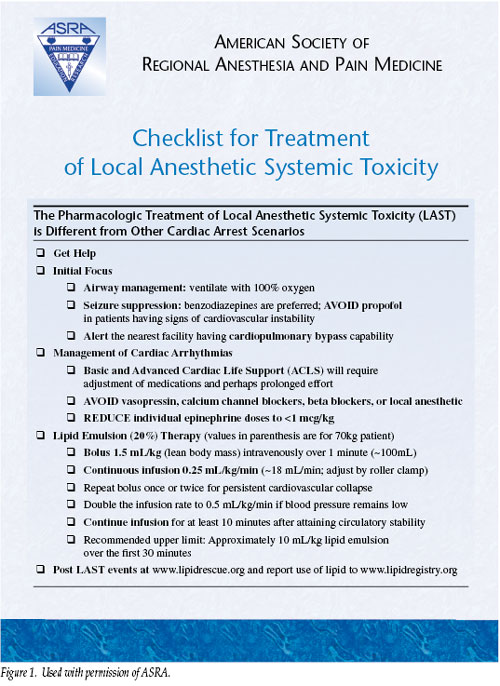



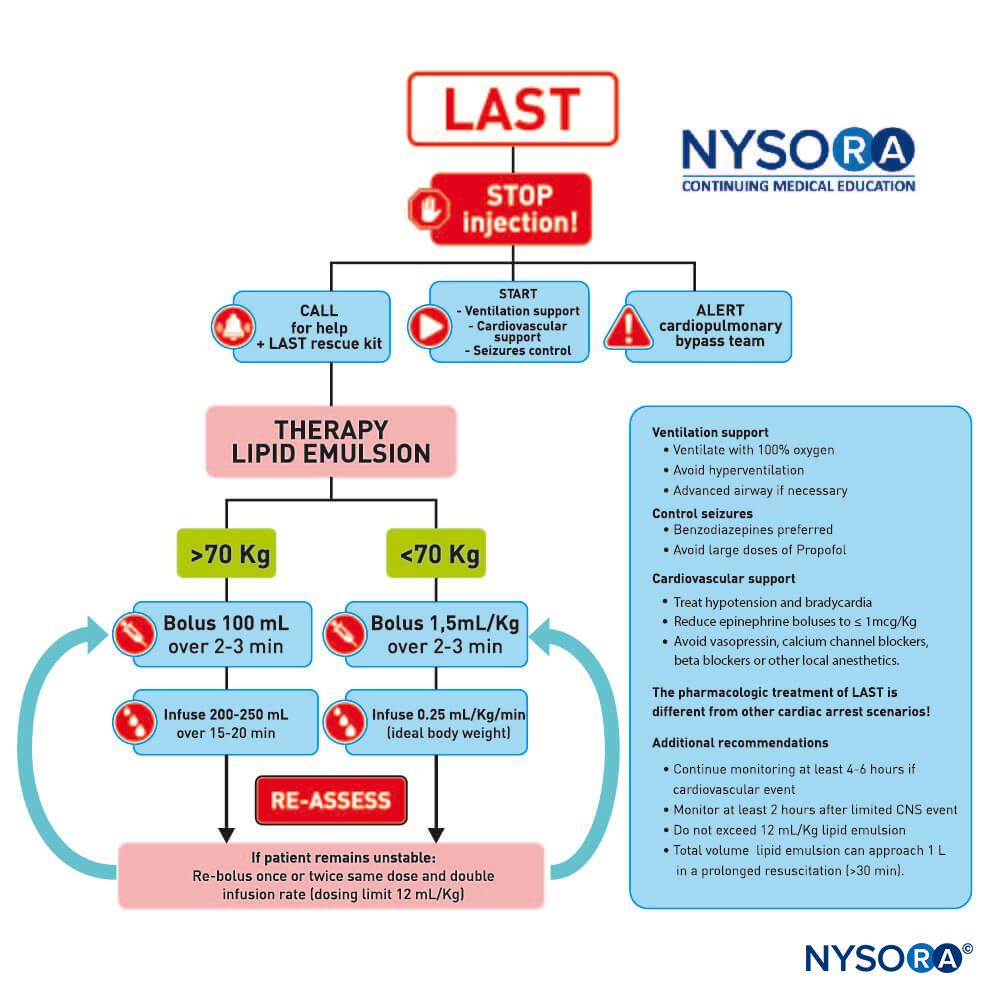
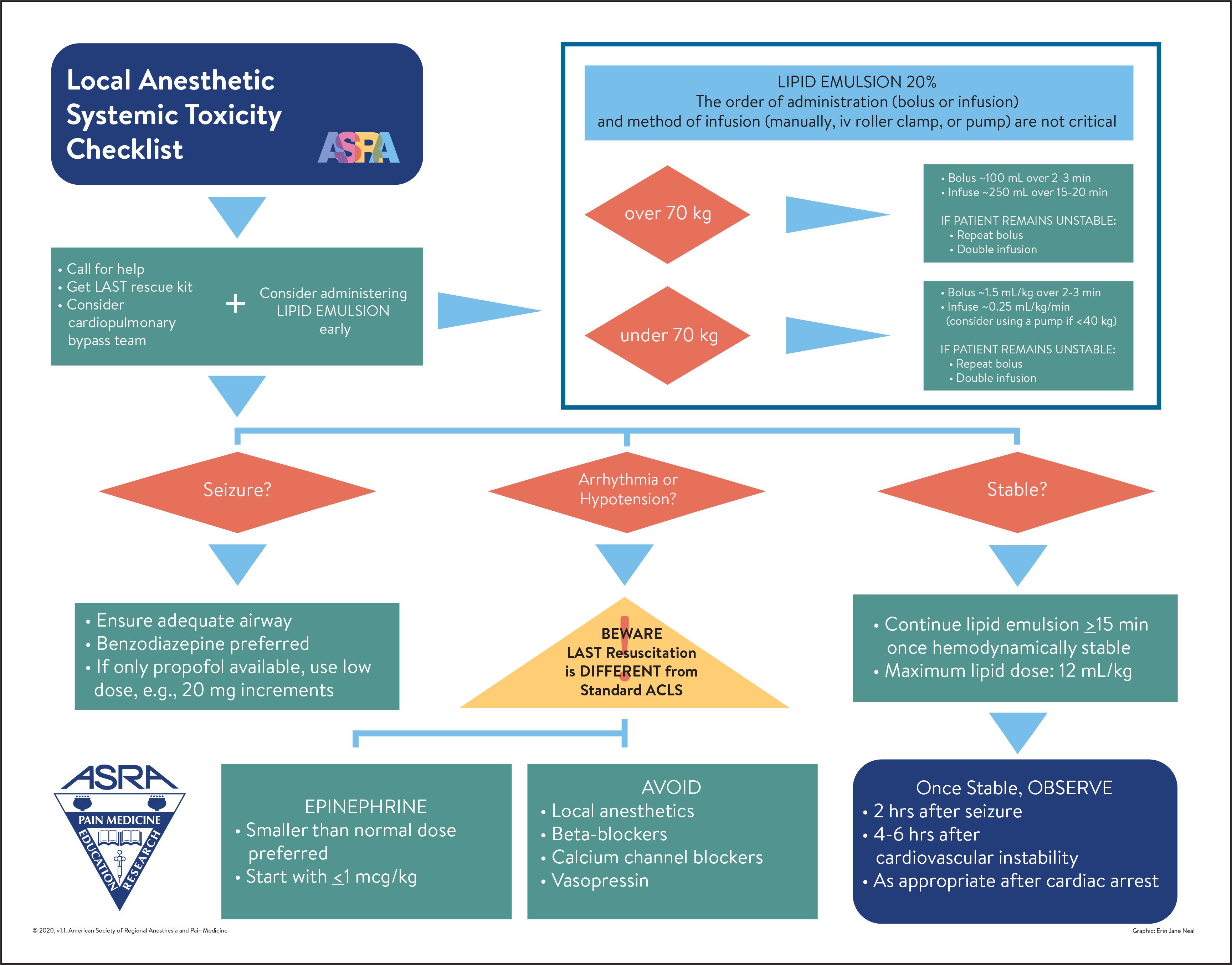


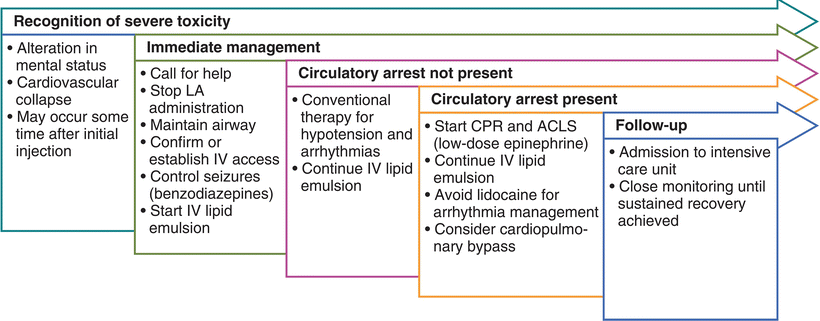







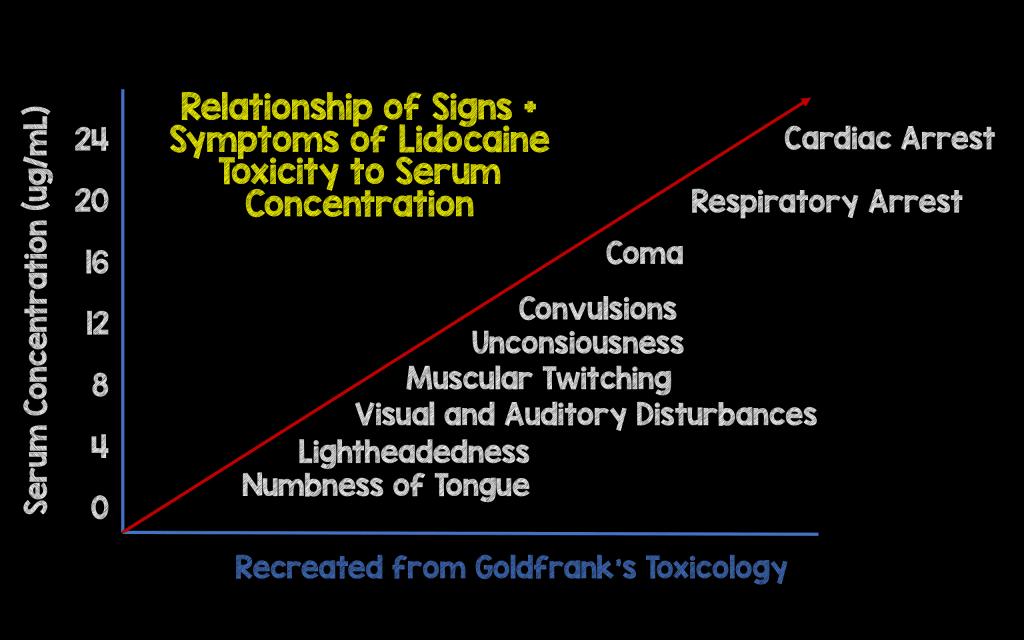

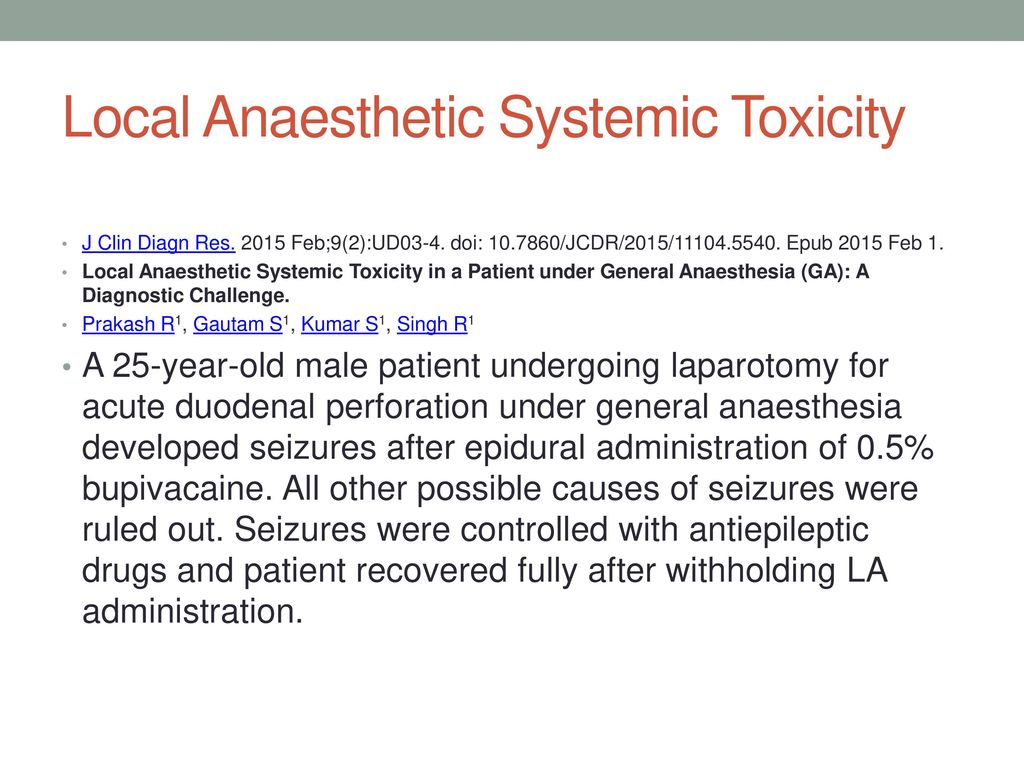

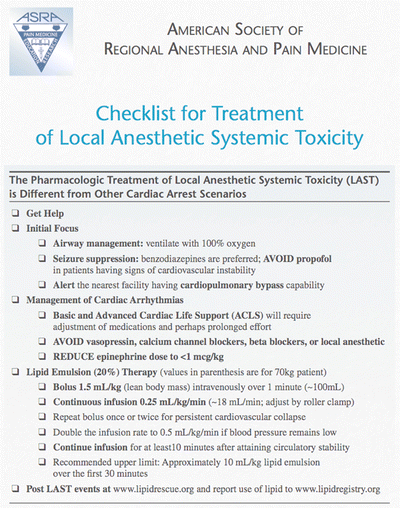


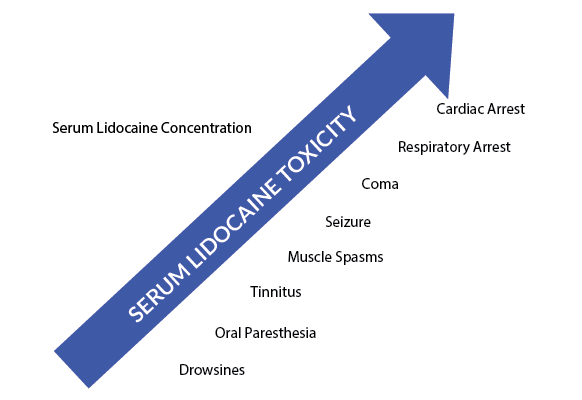




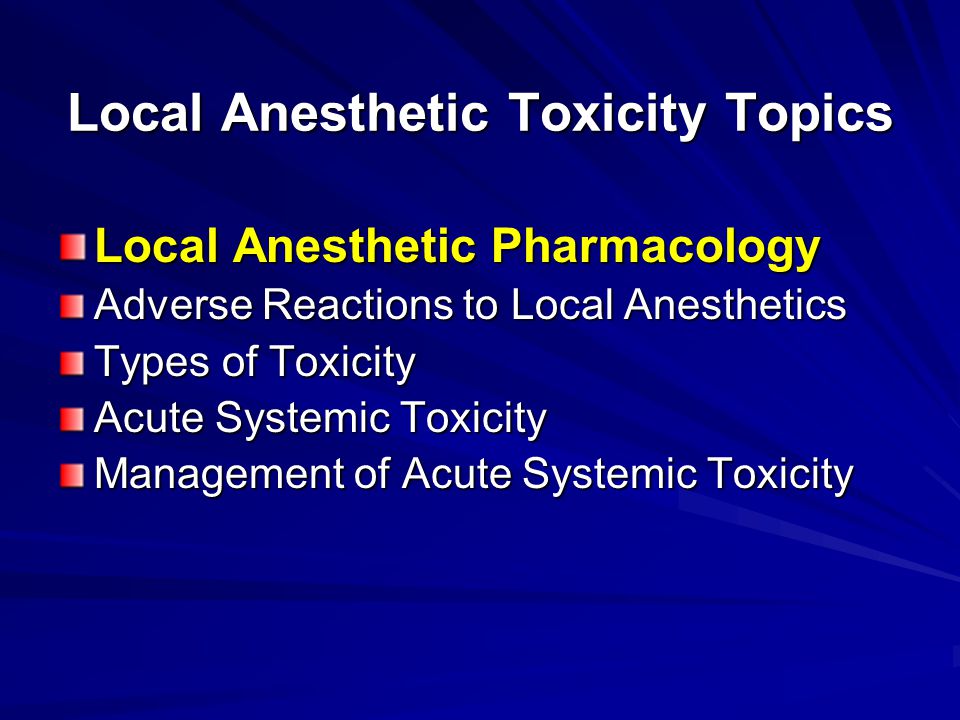



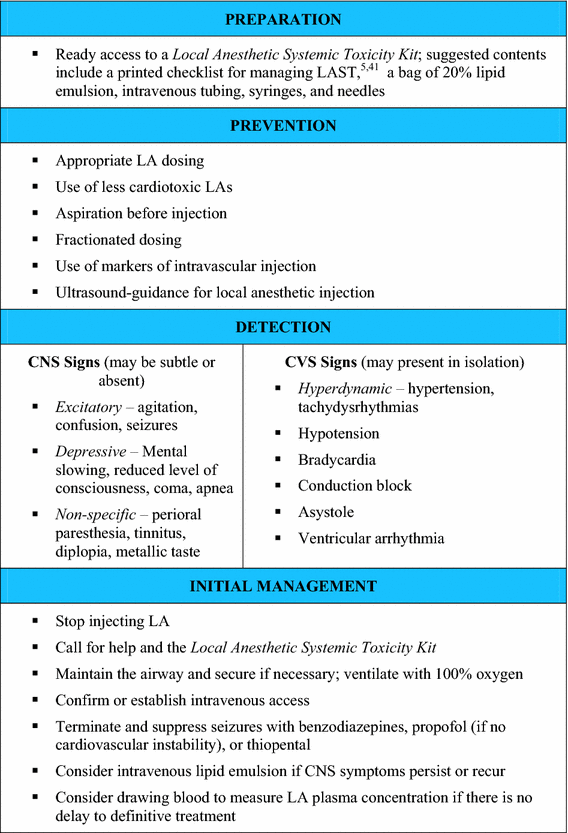



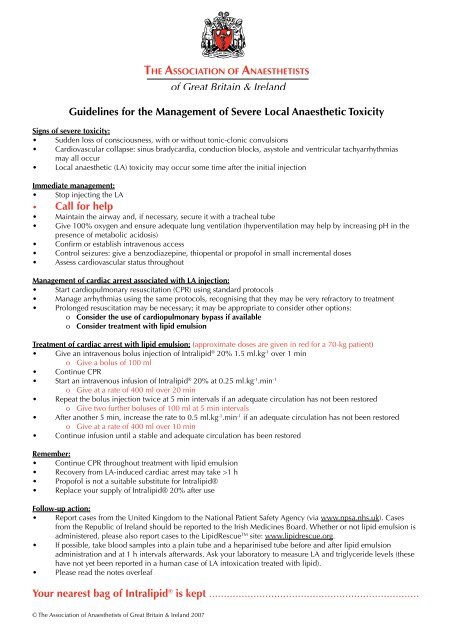

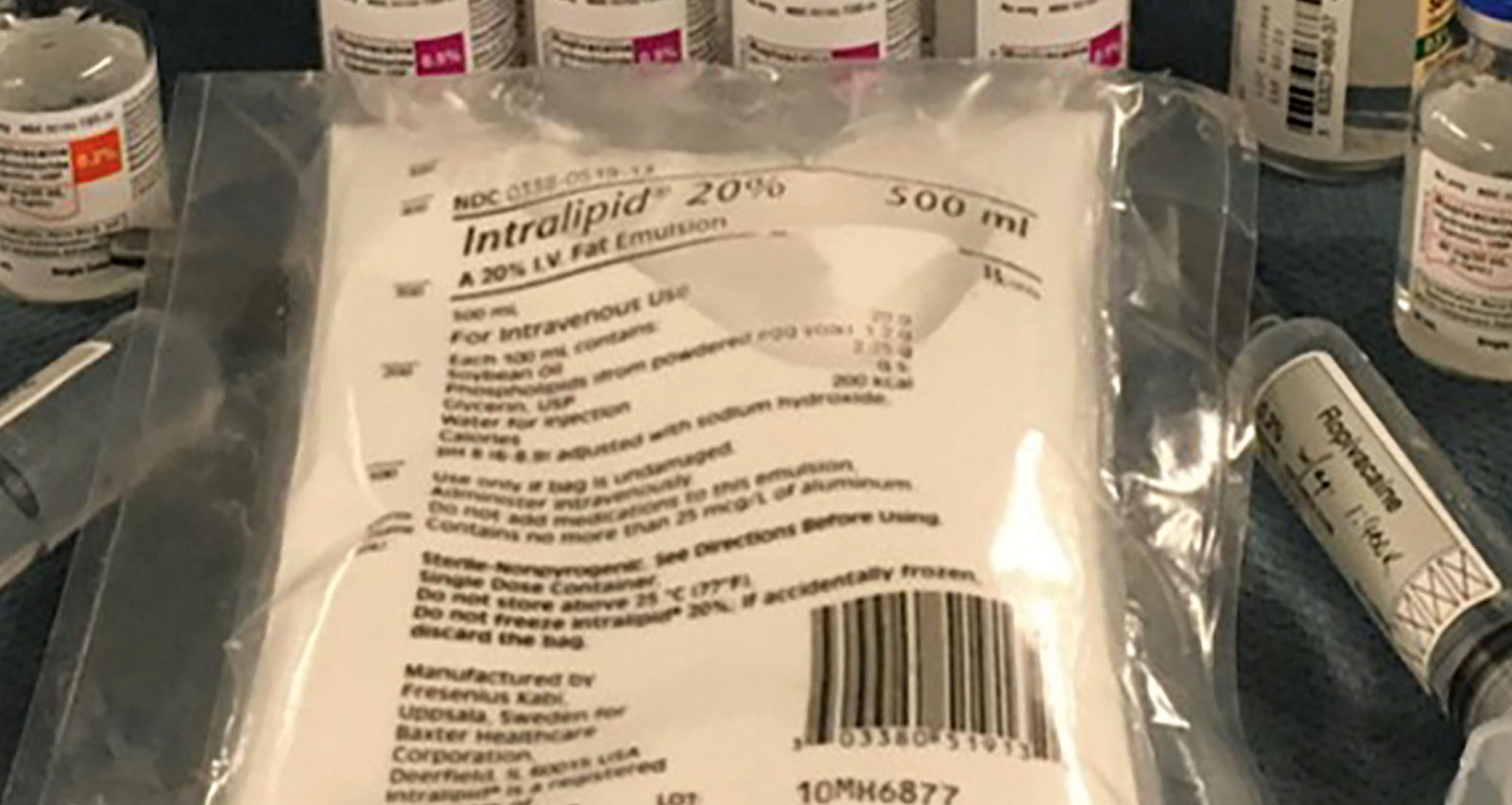


Post a Comment for "Local Anesthetic Toxicity Treatment"